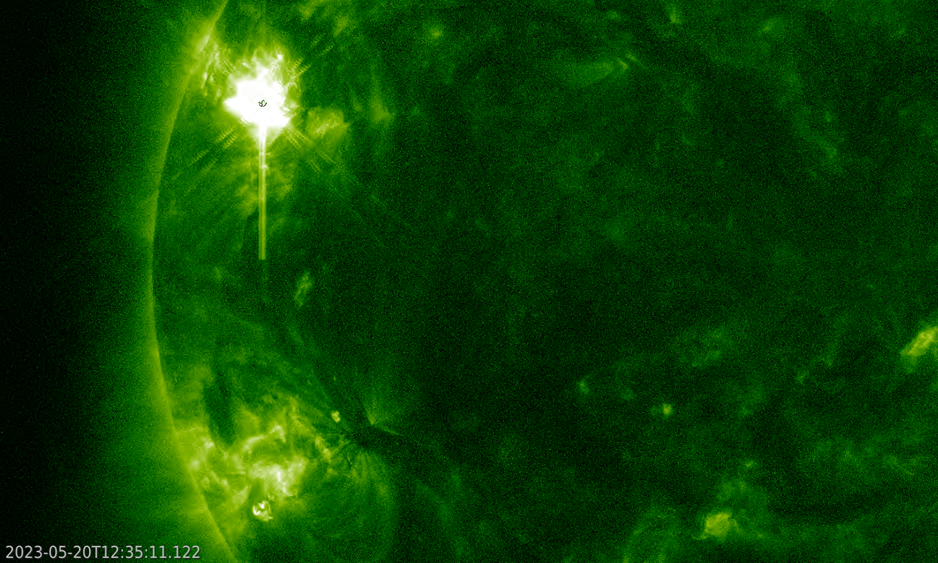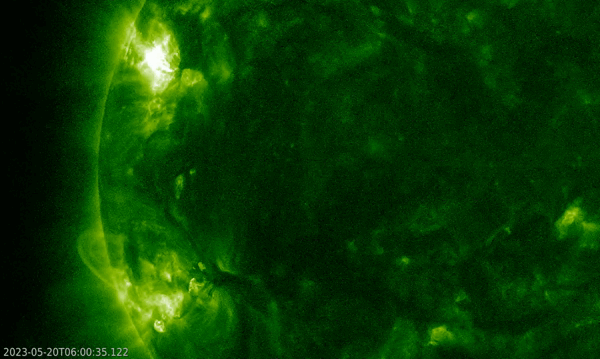Since a few days, the solar disk shows again some relatively large and complex sunspot regions. NOAA 3310 had the biggest sunspot and has been visible with the naked eye (using eclipse glasses of course!). On 16 September, just before it started to round the southeast solar limb, it was (most likely) the source of the largest solar flare of the week (M9.6). Since then, it has remained quite silent in terms of strong flares. This is quite in contrast with its neighbour on the northern solar hemisphere NOAA 3311, which appeared a day later near the northeast limb and was producing immediately many M-class flares. In the white light imagery underneath (SDO/HMI) each of the sunspot groups are shown with their NOAA group number next to it. The clip shows the evolution of these sunspot groups from 17 until early 22 May.
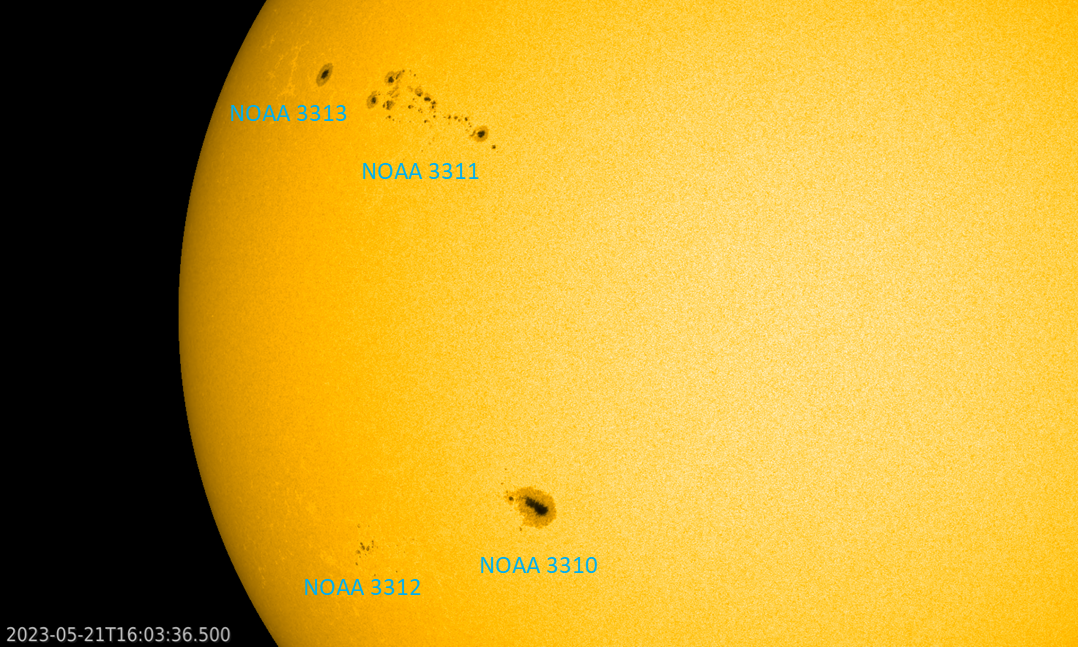
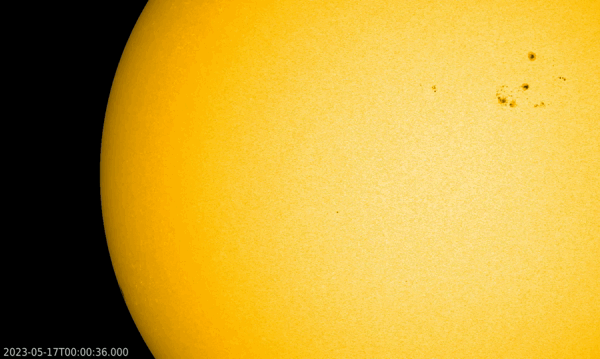
So far, NOAA 3311 has been the source of 21 M-class flares. This number is in the same ballpark as that from NOAA 3165 which produced 24 M-class flares mid-December last year. Some active regions are able to produce several dozens of M-class flares, such as e.g. the famous NOAA 2192 in October 2014 (see this STCE newsitem). Last week, there were only 2 other M-class flares that have been produced: an M1.1 on 20 May generated by NOAA 3312 which is a small sunspot region in the wake of NOAA 3310, and the already mentioned M9.6 flare which was most likely produced by NOAA 3310. The graph underneath shows the evolution of the x-ray flux as recorded by GOES. The M-class flares by NOAA 3310 and 3312 are indicated, all the other M-class flares have been produced by NOAA 3311.
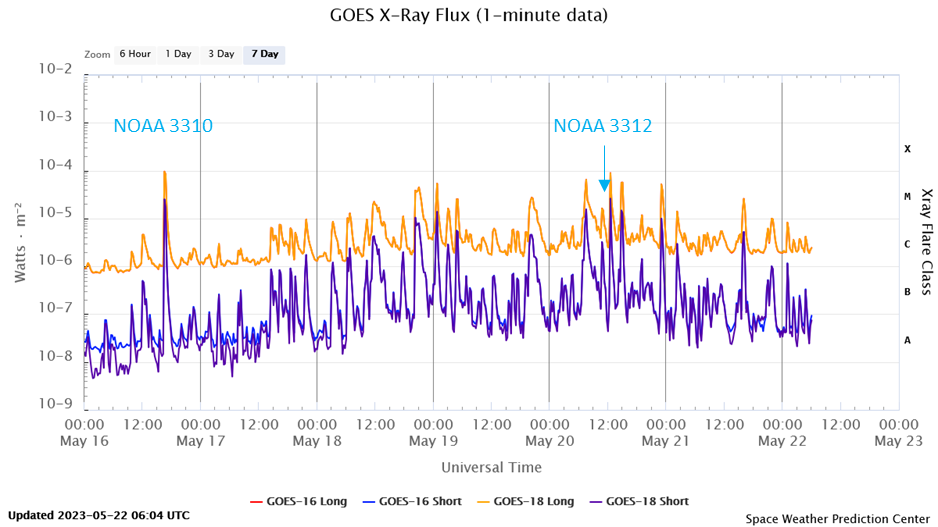
The strongest flare produced by NOAA 3311 was the M8.9 flare also on 20 May. The imagery underneath shows the M8.9 flare near the time of its maximum in extreme ultraviolet (EUV ; SDO/AIA 094). The blooming and diffraction patterns in the EUV images are image artifacts, and are not related to the flare itself - See this STCE newsitem for more info. The clip, covering the period from 06:00 until 16:00UTC on 20 May, shows several other strong flares, with the M8 flare preceded by an M6 flare at 07:32 UTC, and followed by an M5 flare at 15:00 UTC.
